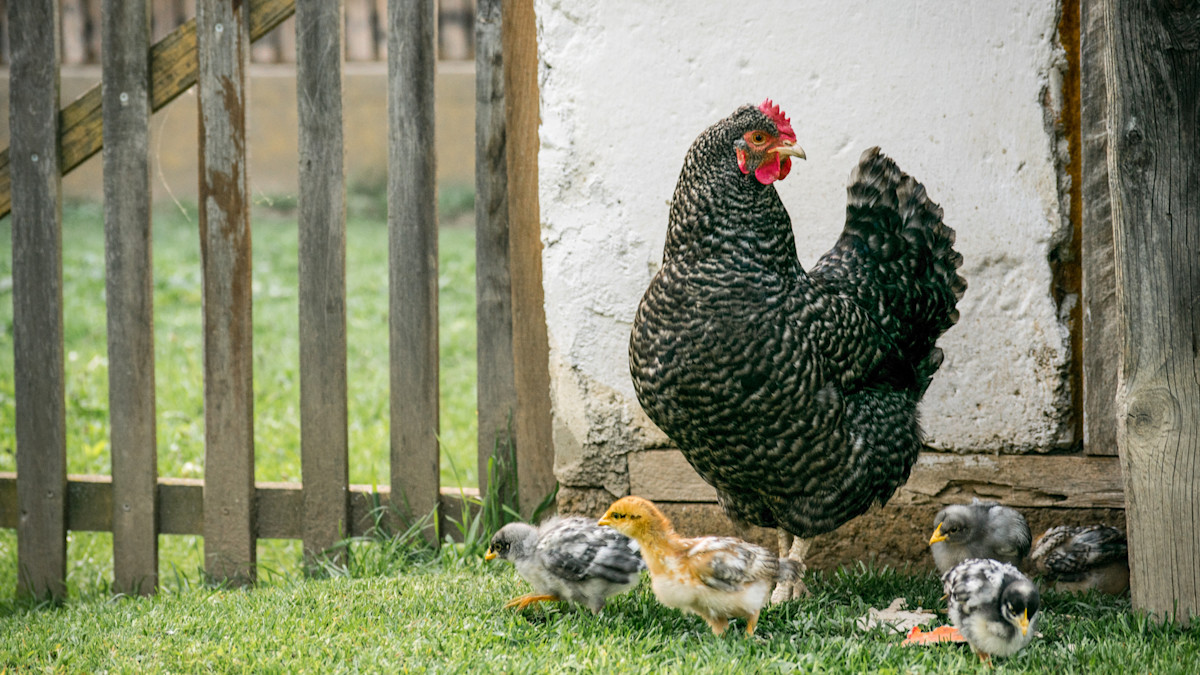
A couple years ago, I was searching for some ducklings to add to my flock and came across a breed called Cayuga ducks. They’re big and black with an iridescent green tint to their plumage, and they lay unique charcoal-colored eggs. They were quite a bit more expensive than the other ducklings I’d been looking at, but the seller explained that his asking price was on par with what most heritage breeds would go for.
It was the first time I’d heard the term “heritage breed,” but it certainly would not be the last. As it turns out, I’ve learned that heritage breeds are not only very interesting but pretty darn important too.
What Are Heritage Breeds?
Heritage breeds are the ancestors of many popular domestic breeds of livestock that we know and love today. In this article, I’ll mainly focus on ducks and chickens, but there are also cows, goats, and other species that Europeans would have brought to North America during the colonization of the country, though a few breeds were, as far as theory goes, here already too.
These breeds often exhibit highly desirable traits that make them durable, hardy, and versatile. Those traits might include things like tolerance to cold, consistent egg production, or desirable foraging skills.
Coincidentally, the same traits that make these breeds popular on the homestead are what make them unpopular in commercial farming. They tend to be more lean, active, and resilient, which is pretty much the exact opposite of what a commercial operation wants from a bird.
It’s important to understand that just because heritage breeds have been around for centuries doesn’t mean they’re the start of the lineage. More often than not, they’re the result of selective breeding from other genetic lines, which developed a winning mix of habits and characteristics that made them highly valuable back in the day. In fact, the origins of many heritage breeds are, at best, blurry. Those Cayuga ducks I mentioned earlier? Their origin story is strange in that nobody can seem to agree on where they came from at all. Plenty of theories, but very little concrete proof.
Why Are Heritage Breeds So Important?
Let’s take a look at why these breeds need to be kept around. When discussing this subject, keep in mind that these were breeds developed to solve certain problems on small-scale farms. In the world of poultry and fowl, many heritage breeds were bred to meet the requirements of dual-purpose birds, which means they had to produce plenty of eggs while also being a worthwhile bird for the kitchen table, too.
These animals came from across the globe, each having traits that allowed them to thrive in the specific regions they were from. The genes that helped these breeds thrive also end up being their saving grace when you take into consideration the fact that in North America alone, roughly 85-90% of all animal products come from fewer than 15 breeds of domestic livestock.
If one illness comes along and wipes out all of your standard, commercial meat birds, it very well may not have the same effects on heartier, more illness-resistant heritage breeds, depending on the nature of the illness and its severity.
There is also the biodiversity aspect that heritage breeds bring to the table. Heritage traits are important because they allow breeds to be far more independent than that of your standard commercial breeds. They’re the traits that allow these breeds to be survivors on their own if necessary—the kind of domestic livestock with the genetic disposition to potentially go feral if left to their own devices, which is less than can be said for fast-growing commercial breeds.
I’m not saying that fast growers don’t have their place within the agricultural community. Without them and their fast-growing capabilities, feeding North America’s population would become quite a bit more difficult, not to mention quite a bit more expensive. But, by maintaining heritage traits in our small farms, we can promote healthy, disease-resistant, and more sustainable breeds for the future—and let the commercial growers worry about feeding the masses.
The Risk Of The Abyss
Here’s a shocker: more heritage breeds have perished in extinction than are left living in the world currently. Sobering stuff, right? We tend to get attached to the species that are native to the wilderness areas that are at-risk or threatened, but we should be equally concerned about our heritage breeds whose existence is imperative for maintaining aspects of the domestic food chain.
We’re lucky that there are people out there who are looking out for these breeds. Folks at The Livestock Conservancy make it their mission to ensure heritage breeds don’t perish to the sands of time. Because these breeds aren’t raised at commercial capacity due to their slower growth rates, they’re more suited in the barnyard or backyard rather than a commercial facility.
During the last half of the twentieth century, many species of heritage animals faced extinction, some succumbing to it entirely. But, things are starting to look brighter as the renaissance of homesteading gains more popularity and people seek more independence with food security. Folks are rediscovering that when it comes to truly local food, this is where heritage breeds shine. Small-scale farmers and homesteaders hold the balance of these animals in their hands, and every batch of Cayuga ducklings, or New Hampshire chicks, takes these breeds one step further from the brink.
You can help, too. Consider bringing heritage breeds onto your homestead. Forgo the desire for quick gratification with fast-growing chicken and enjoy the slower pace of a bird that can take care of itself but still dresses out at weights perfect for the dinner table. Encourage folks in your community to do the same and start conversations about why these breeds are important for your local food sustainability and security, which is why they also deserve a place on the rural American landscape for years to come.





